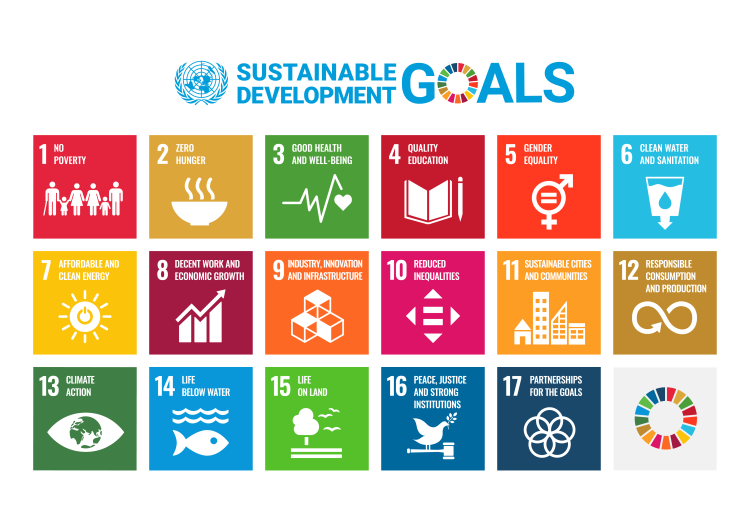
Can Data and Analytics Help Save the World?
As a member of the data and analytics community, do you have what it takes to help save the world? Following the United Nations’ call for support, many companies and organizations are leveraging advances in data and analytics to solve some of the world’s greatest challenges.
- By Troy Hiltbrand
- April 17, 2023
In the fall of 2015, leaders from across the world came together at the United Nations to discuss a comprehensive strategy for tackling the world’s greatest challenges. As a result, they published a list of 17 sustainable development goals (SDGs). The purpose of these SDGs was to establish a set of targets for improvement in areas of society that continue to vex countries and societies around the world.
Quantifying these goals is intended to mobilize stakeholders across countries, sectors, and regions by providing a common purpose. By having defined outcomes and deliverables, society’s influencers are encouraged to create pressure on the world’s political and business leaders to make meaningful changes. The goals also bring together the world’s greatest minds to leverage their knowledge, experience, and creativity to come up with innovative solutions that might solve these age-old challenges.
Finding these solutions will require experts from many different domains and disciplines. The area of data and analytics is one of those domains needed for the world to be successful in meeting its 2030 goals. The key to many of these goals includes using data and analytics to fully characterize the problem, identify solutions, and track progress toward the ultimate 2030 goals.

Sustainable Development Goals
As a strategy, these 17 SDGs outline the work we must do and the targets we need to accomplish. Now that we are 8 years into this 15-year project, we are seeing businesses and organizations from around the world work to make these goals a reality. In this article we will explore progress in five of these 17 goals.
Quality Education
The goal of SDG 4 -- quality education -- is to make sure everyone around the world has inclusive and equitable opportunities for education and that this education promotes lifelong learning for all. There are two parts to this. The first is to ensure that schools are available. The second is to ensure that the infrastructure and information available empowers them to be successful.
UNICEF built a tool that uses high-resolution satellite imagery combined with deep learning to map every school in the world. With this information, they can identify gaps in infrastructure that can hinder learning. UNICEF partners with organizations such as Development Seed and UC San Diego’s Big Pixel Initiative to develop convolutional neural network (CNN)-based machine learning to classify which buildings are schools and the support infrastructure each school includes.
This becomes an input for governments and other nonprofit organizations around the world to determine areas of greatest need. An example of this is the nation of Kyrgyzstan, which is using this mapping combined with additional information, to identify the locations of their schools as well as to assess the connectivity to the Internet available to students in the classroom. Empowered with this information, investment is being made to rectify the disparities and ensure that students not only have a place to attend school but that they also have access to the information tools needed to facilitate meaningful learning.
Gender Equality
In addition to ending all forms of discrimination against women and girls everywhere, SDG 5 focuses on ensuring that women and girls are safe from trafficking and other forms of sexual exploitation. In coordination with governments and local law enforcement agencies, the goal is to prevent this trafficking activity and protect some of society’s most vulnerable.
Organizations such as Operation Underground Railroad are leading the charge in both the prevention and rescue operations of this mission. In conjunction with researchers at Washington University, they have developed tools to crowdsource data gathering that is then used to find and stop child trafficking around the world. Users can take pictures of the hotels where they stay and upload them into a centralized database along with geolocation metadata.
Using analytics, these are broken down into features such as carpet color, wall decorations, and size and placement of furniture. These data-engineered features are then compared to and matched against pictures from online ads featuring trafficked women and children. This facilitates locating where these trafficked individuals are being held and assists local law enforcement agencies and Operation Underground Railroad in finding and rescuing them.
Clean Water and Sanitation
Safe, potable water continues to be a challenge worldwide. It is estimated that water scarcity issues impact more than 40% of the global population and about 2.2 billion people don’t have access to safely managed drinking water. Companies are looking for ways that data and analytics can help solve this challenge.
It is estimated by the World Wildlife Fund that agriculture uses 70% of the world’s fresh water and that it wastes almost 60% of that water due to leaky irrigation systems and the cultivation of crops that overconsume water. Today’s farmers are starting to deploy smart sensors throughout these irrigation systems to support real-time data collection. By analyzing this data, they can quickly identify leaks and breaks in their water distribution system; the quicker these are fixed, the less their irrigation systems waste water, leaving clean, fresh water in the system to be used elsewhere to eliminate water scarcity.
In addition, farmers are using data collected from the soil combined with data associated with the conditions needed for their crops to optimize watering plans. By leveraging analytics, farmers can preserve water and work to produce an optimal yield on their land.
Some crops require a significant amount of water for growing, such as rice. Historically, rice production required that a four-inch level of water was always maintained on the crop. An alternative method called alternating wetting and drying (AWD) was developed but required that farmers keep track of the water levels of all areas of their land. Manual data collection and analysis made this AWD process labor-intensive. Recently, Whitaker Farms in Arkansas partnered with AT&T to install pumps and sensors on their farms so they can monitor the amount of water they provide to their rice crops. These sensors enable 24-hour monitoring and automated management of the amount of water they need to provide for their rice crops. This step alone has reduced their water use by 60% and their pump energy use by 25%.
Affordable and Clean Energy
Energy is fundamental to our everyday lives, but inefficient energy has a high propensity to create pollution and cause havoc on our climate. Finding affordable and sustainable alternative sources of energy is critical for our future. It is also important to effectively conserve the energy that we have from traditional energy sources to minimize supply needs and reduce pollution.
Two of the main sources of alternative energy today, solar and wind energy, are reliant on specific weather conditions. Today, machine learning can be used with inputs from satellite imagery and historical weather data to make highly accurate weather forecasts. With a clearer picture of the forecasted weather, energy production can be accurately predicted and optimized.
One method being used to optimize energy consumption is a concept called non-intrusive appliance load monitoring (NIALM). With the advent of the Internet of Things and smart sensors, power companies are able to monitor the energy consumption of appliances across the grid and can use machine learning to identify patterns of use. With these data patterns, machine learning models, and smart devices, automated optimizations can be deployed to conserve energy and lighten the load on the overall energy grid. Appliances can be deactivated when not needed or can be transitioned to a lighter operating mode to provide adequate performance with less energy impact.
Life Below Water
The ocean is our planet’s largest ecosystem, but it is also still a great mystery. SDG 14 focuses on protecting this ecosystem and the life that exists within it.
The Nippon Foundation took this development goal to heart and started the Seabed 2030 project. The goal is to leverage a combination of satellite maps, sensors aboard ships, and underwater submersibles to gather millions of data points that will enable this mapping. Their goal is to have a complete picture of the ocean floor by the year 2030. Combining this data with analytics helps us better understand how the layout of the ocean impacts our climate and helps us create a symbiotic relationship with the ocean and its immense ecosystem.
Final Thoughts
In the end, these 17 goals are a significant challenge. Solutions have the potential of ensuring our continued success as a population on earth. Because they are big challenges, they will require big ideas and innovation from across multiple domains. As a society, this is a great opportunity for companies and governments to fully leverage data and analytics as a bedrock component of how they will achieve these 2030 targets